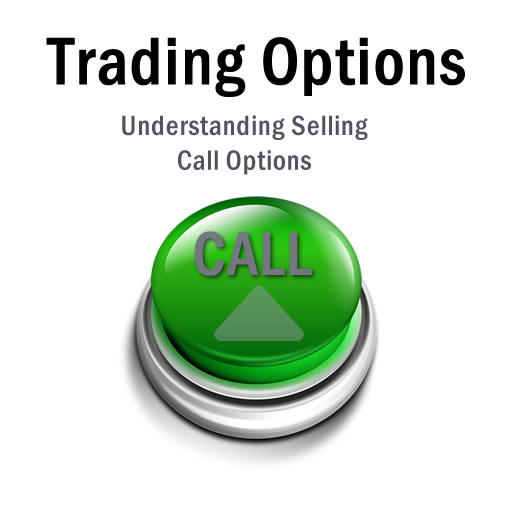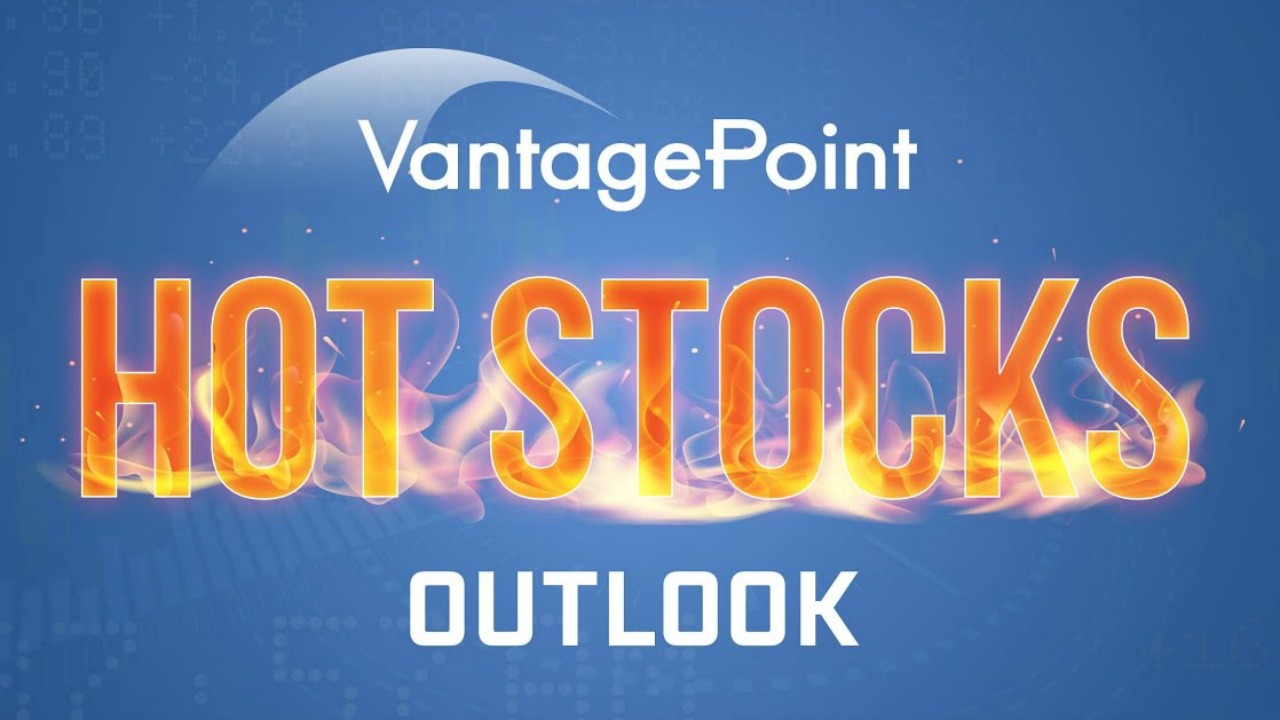The most difficult part of options trading is understanding the terminology which can be very granular and extremely specific. Once the vocabulary is mastered the power and possibilities of options are very quickly understood.
Options are very exciting financial instruments which are used in many industries. They have very specific use cases which allow sellers of the options to monetize their assets very uniquely.
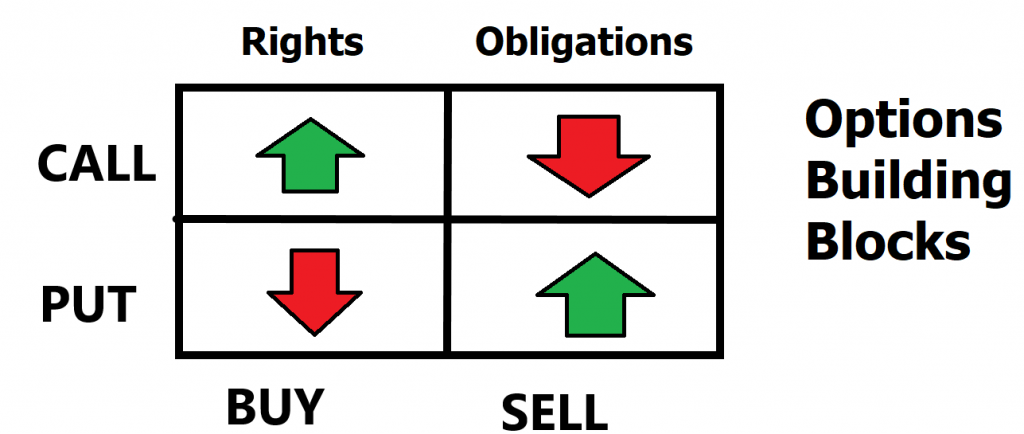
Today we are going to discuss Selling Call Options as an initiating position. Whenever a trader buys an option, they have a right but not an obligation to buy or sell the underlying asset at the strike price between now and an expiration date in exchange for receiving a premium.
The seller of an option is the creator of the option. Whenever an option is created, the creator is obligated to perform by the terms of the contract unless they liquidate the position before the expiration date. In exchange for creating the OPTION the seller receives the options premium. Their obligation exists only for the term and life of the option.
The simplest analogy to selling options is to think of an insurance company. The insurance company creates an insurance policy. They receive the premium and they are obligated by the terms of the contract. Customers who purchase insurance acquire the peace of mind that they have protection should something go wrong.
In the financial markets, option sellers become hyper-focused on time because TIME and volatility is what determines the price/cost of an option. All things being equal the more time an option has before it expires the more expensive it will be. Likewise, the more volatile an asset is the more uncertainty/risk exists about the future prospects of the asset, so the option will also be more expensive.
Let’s look at an example, to understand what is entailed for a SELLER of a Call Option and understand their obligations, rewards, and risks. For purposes of discussion let’s assume that XYX is trading at $46 per share and the call option has 4 weeks before it expires.
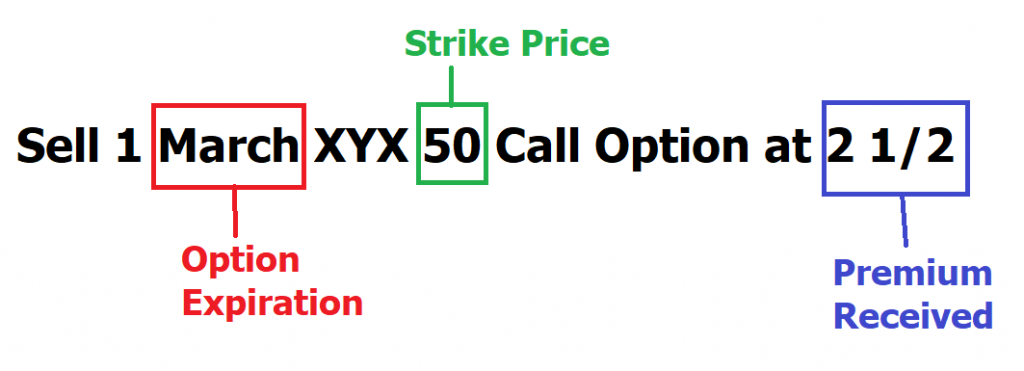
In the example, above a trader is selling 1 XYX Call option (100 shares) with a strike price of $50 and receiving $2 ½ per share for creating this obligation. Since an options contract represents 100 shares of the underlying stock the call option seller has received $250 in premium.
So, the very first thing that we can calculate is that a maximum profit of $250 is available and the duration of the trade is only 4 weeks. Since the duration of the option is 4 weeks, we can assume that the option premium will decay by roughly 25% a week!
This is factual if all other things are considered equal and prices remain stable. So, what the call option seller is enamored by in this part of the transaction is that time decay of the option is predictable. The closer we get to the expiration date the less the option will be worth.
So, if prices remain relatively stable the price of the option will decay as follows:
Start of trade option is worth 2 ½.
At the end of week 1 call option is worth $1. 875. Option price has decayed 25%.
At the end of week 2 call option is worth $1.25. Option price has decayed 50%.
At the end of week 3 call option is worth $.625. Option has decayed 75%.
At the end of week 4 call option is worth ZERO. Option premium has decayed 100%.
The decay of the premium value is mathematically predictable and is what enamors traders to seriously consider learning more about selling call options. In the above example, the option is losing roughly 25% of its value in week 1 and that amount begins to increase exponentially the closer we get to the expiration date.
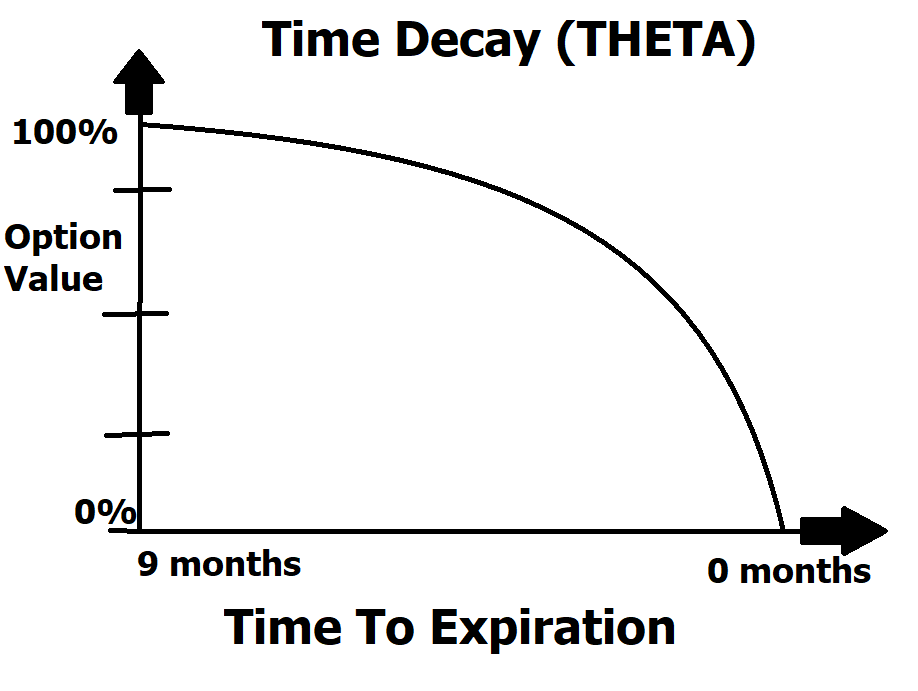
IS this a good deal?
It all depends on where XYX stock is trading at expiration!
The second thing that the call option seller is looking at is what is the break-even point for the trade and how far is that from the current price of the stock. Let me explain. We assumed that the stock is trading at $46 per share. This call option seller is obligating themselves to deliver XYX shares at $50 a share between now and the expiration date of the Option in March. In exchange for creating this obligation they receive $2 ½ per share of premium today. The premium the option seller receives is the most that they can make on the transaction. To completely understand the risk of the transaction, the call option seller must know what their break-even point is at expiration. To calculate this all that needs to be done is that we must add the premium received to the strike price. The corresponding value is the break-even price at expiration for the transaction.

In our example, when we add the strike price of $50 and the premium id $2 ½ our break-even price at expiration is 52 ½. This boundary also shows a trader at what point the risk of selling the option becomes magnified exponentially. But more importantly, we can quickly calculate that the underlying stock has to move from $46 per share to $52 ½ per share at expiration for the option seller to be further at risk. This represents a 14% move in the underlying stock for the option seller to be put at exponential risk.
How often has the underlying stock made a 14% move in 4 weeks?
What is the trend of the underlying stock?
There are several ways we must look at this to understand the nuances and risks. First off, our analysis is only done based upon the expiration date.
Here is what this transaction looks like at many different settlement prices at expiration.
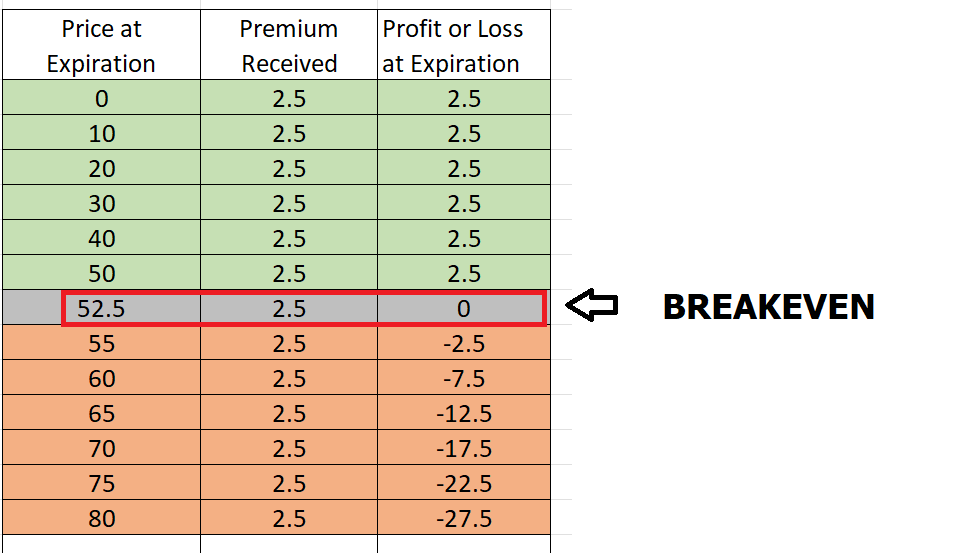
Notice how the maximum profit is the premium received. As a call option seller, the most amount of money that you can make is the premium you receive for creating the obligation that you will make delivery of the shares at the agreed-upon strike price.
But there is a very important nuance that all call option sellers are aware of. Specifically, what I am referring to is that the risk in this transaction is theoretically UNLIMITED. The reason this is so, is because in theory, the stock can go as high as infinity. If you sell a call option with a strike price of $50 and the stock goes to $200 you are obligated to deliver the stock at $50. While this can occur, the reality is that from a probability standpoint it is an extremely low occurrence. But, that being said, this simple truth is what often stops the majority of traders from ever considering selling call options.
From a graphical perspective this is what selling a call option looks like:
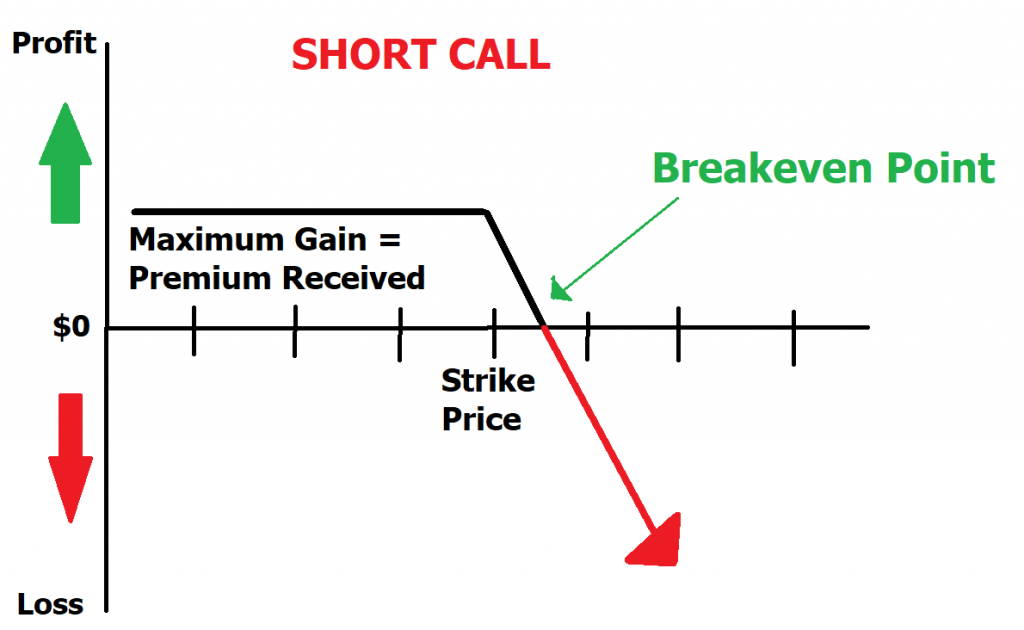
Professionals involved in this transaction will manage the position by choosing to buy the stock at their break-even price of $52.5 to avoid a catastrophic loss. Or they will place stop losses on their options position to liquidate their obligations should the market begin to move substantially higher. The point that I’m making is to sell a call option requires that you be very, very aware of the risks and rewards of the transaction. We can see in this example we need to understand the nuances. More importantly, what great traders do is manage the risk on their trades at all times by practicing good money management.
Initially, it may not seem very attractive to trade an instrument and strategy where your maximum gain is only $250, and your risk is theoretically unlimited. This sounds like a losing proposition until you crunch the numbers. To determine whether this is relevant for you as a trader you need to determine what percentage of the time will you win and what percentage of the time will you lose and how much money will you lose when you are wrong? When you develop answers to this very basic question, then you can determine whether selling call options is a good strategy for you to consider. The best manner for you to answer this question is to open a demo account and practice this tactic for a minimum of 6 months so that you understand all the possibilities.
I often tell traders to imagine making $250 on each trade that they do. Then I ask them to imagine that they win 99% of the time.
This sounds like a recipe to print money. Spoiler – It is not!
Until you know how much you lose on the losing trades you can’t determine whether this is an activity that you want to be engaged in.
What makes this tactic extremely exciting is that whenever you sell a call option you can be completely wrong in terms of price movement and still make money. In our example, prices could rally all the way from $46 to $50 and the call option seller would keep the entire $2.50 premium. When this occurs you begin to appreciate the power and income that can be generated from time decay. But as I have discussed, selling call options is very nuanced and we always have to be aware that reward is limited to the premium we collect, and risk is theoretically unlimited.
Since many stocks have Options which expire every week, understanding the mechanics of this strategy are vital towards creating tactics that continue to put the odds in your favor while simultaneously creating income in your portfolio.
But here is where things can get exciting.
Imagine using Artificial Intelligence to put the odds even further in your favor!
How?
Vantagepoint forecasts trend direction up to 3 days in advance with up to 87.4% proven accuracy!
Great trading is never about how much you make when you are right. It is always about how little you lose when you are wrong. When you learn how to sell Options and collect premium you can bewrong and still make money. I just described this tactic in the example above.
Artificial intelligence is so powerful because it learns what doesn’t work, remembers it, and then focuses on other paths to find a solution This is the Feedback Loop that is responsible for building the fortunes of every successful trader I know.
Artificial Intelligence applies the mistake prevention as a continual process 24 hours a day, 365 days a year towards whatever problem it is looking to solve.
That should get you excited because it is a game-changer.
This is a winning combination.
Find the trend.
Scrutinize the 1–3 day forecast.
Learn to Sell Call Options with minimal risk exposure and apply sound money management.
Be beautifully positioned before the herd even knows what happened.
Manage the RISK on each trade.
Lather. Rinse. Repeat.
The Answer AI offers may surprise you.
This is how small traders grow their accounts by taking small bites out of the market consistently.
Today Artificial Intelligence, Machine Learning and Neural Networks are an absolute necessity in protecting your portfolio.
Intrigued? Visit with us and check out the a.i. at our Next Live Training.
Discover why artificial intelligence is the solution professional traders go-to for less risk, more rewards, and guaranteed peace of mind.
It’s not magic. It’s machine learning.
Make it count.
THERE IS A SUBSTANTIAL RISK OF LOSS ASSOCIATED WITH TRADING. ONLY RISK CAPITAL SHOULD BE USED TO TRADE. TRADING STOCKS, FUTURES, OPTIONS, FOREX, AND ETFs IS NOT SUITABLE FOR EVERYONE.IMPORTANT NOTICE!
DISCLAIMER: STOCKS, FUTURES, OPTIONS, ETFs AND CURRENCY TRADING ALL HAVE LARGE POTENTIAL REWARDS, BUT THEY ALSO HAVE LARGE POTENTIAL RISK. YOU MUST BE AWARE OF THE RISKS AND BE WILLING TO ACCEPT THEM IN ORDER TO INVEST IN THESE MARKETS. DON’T TRADE WITH MONEY YOU CAN’T AFFORD TO LOSE. THIS ARTICLE AND WEBSITE IS NEITHER A SOLICITATION NOR AN OFFER TO BUY/SELL FUTURES, OPTIONS, STOCKS, OR CURRENCIES. NO REPRESENTATION IS BEING MADE THAT ANY ACCOUNT WILL OR IS LIKELY TO ACHIEVE PROFITS OR LOSSES SIMILAR TO THOSE DISCUSSED ON THIS ARTICLE OR WEBSITE. THE PAST PERFORMANCE OF ANY TRADING SYSTEM OR METHODOLOGY IS NOT NECESSARILY INDICATIVE OF FUTURE RESULTS. CFTC RULE 4.41 – HYPOTHETICAL OR SIMULATED PERFORMANCE RESULTS HAVE CERTAIN LIMITATIONS. UNLIKE AN ACTUAL PERFORMANCE RECORD, SIMULATED RESULTS DO NOT REPRESENT ACTUAL TRADING. ALSO, SINCE THE TRADES HAVE NOT BEEN EXECUTED, THE RESULTS MAY HAVE UNDER-OR-OVER COMPENSATED FOR THE IMPACT, IF ANY, OF CERTAIN MARKET FACTORS, SUCH AS LACK OF LIQUIDITY. SIMULATED TRADING PROGRAMS IN GENERAL ARE ALSO SUBJECT TO THE FACT THAT THEY ARE DESIGNED WITH THE BENEFIT OF HINDSIGHT. NO REPRESENTATION IS BEING MADE THAT ANY ACCOUNT WILL OR IS LIKELY TO ACHIEVE PROFIT OR LOSSES SIMILAR TO THOSE SHOWN.





